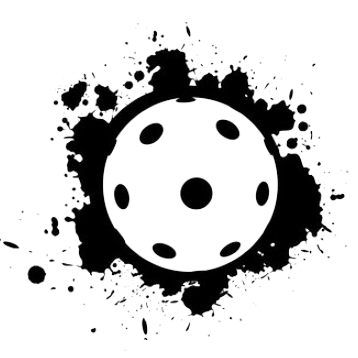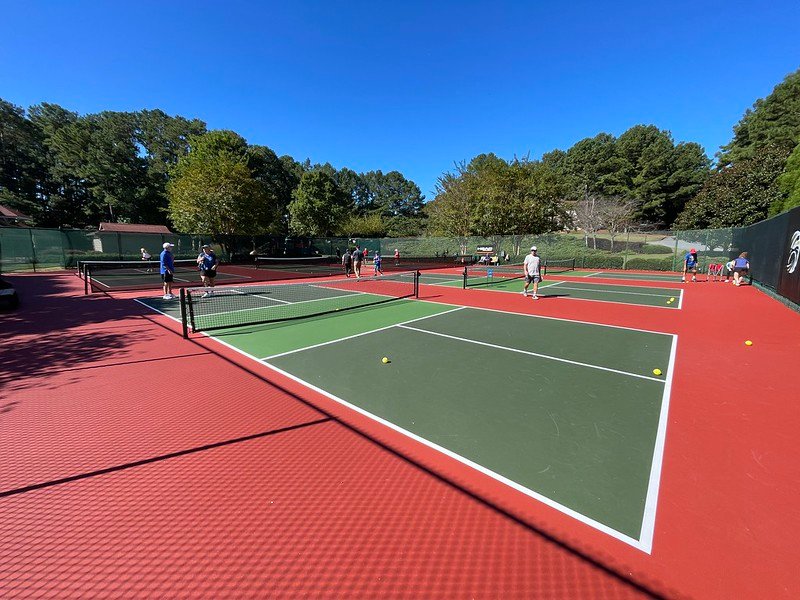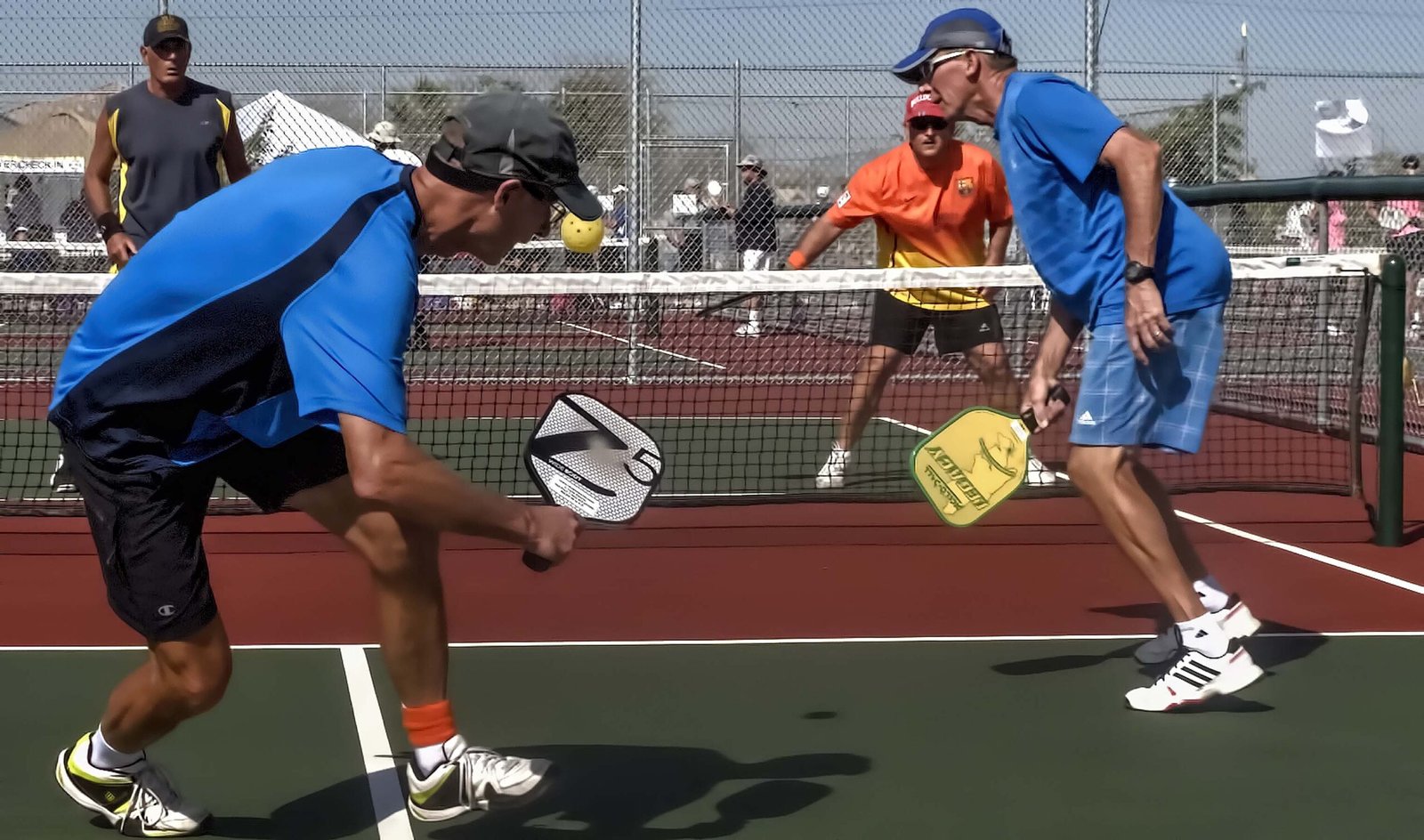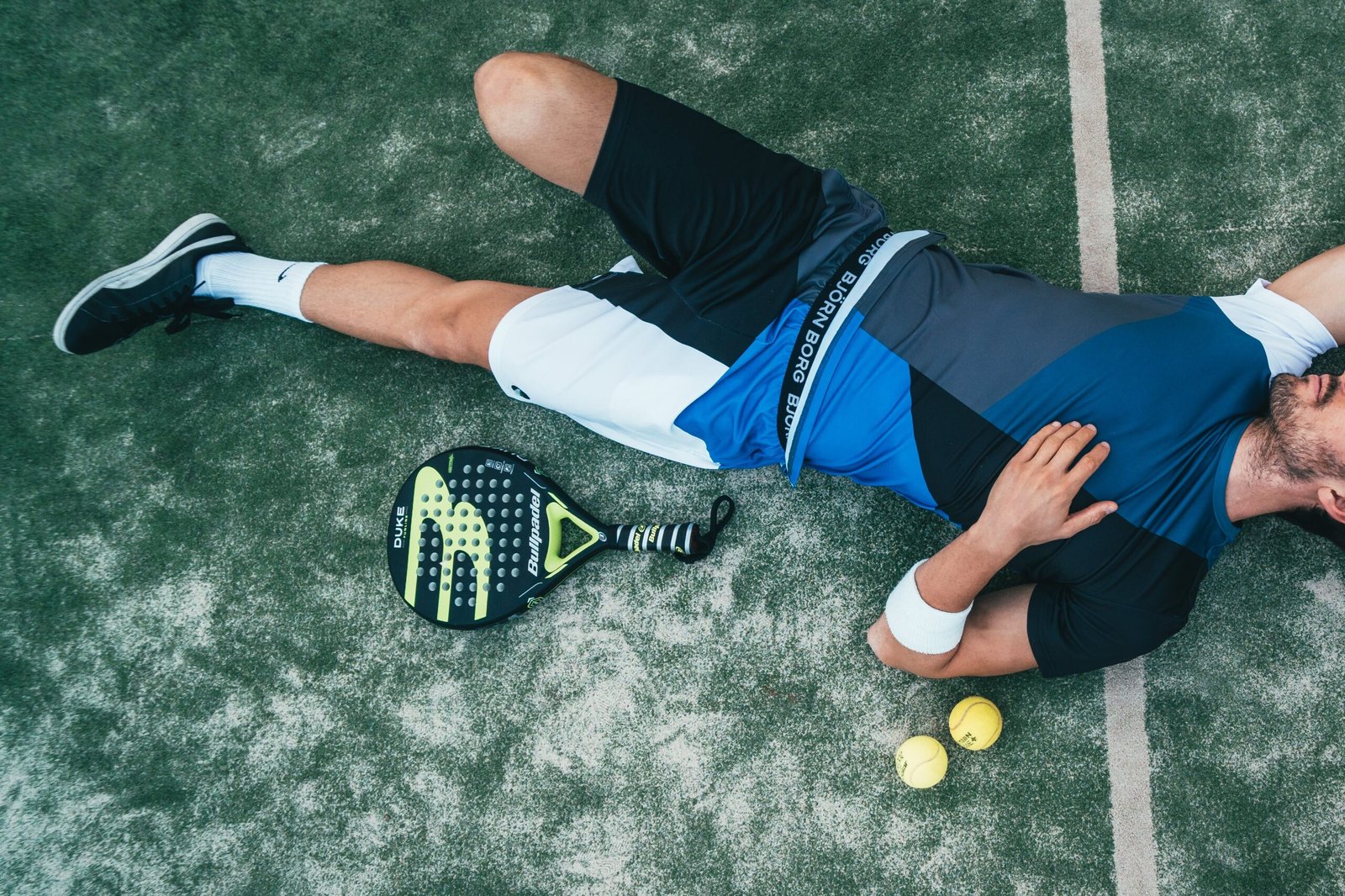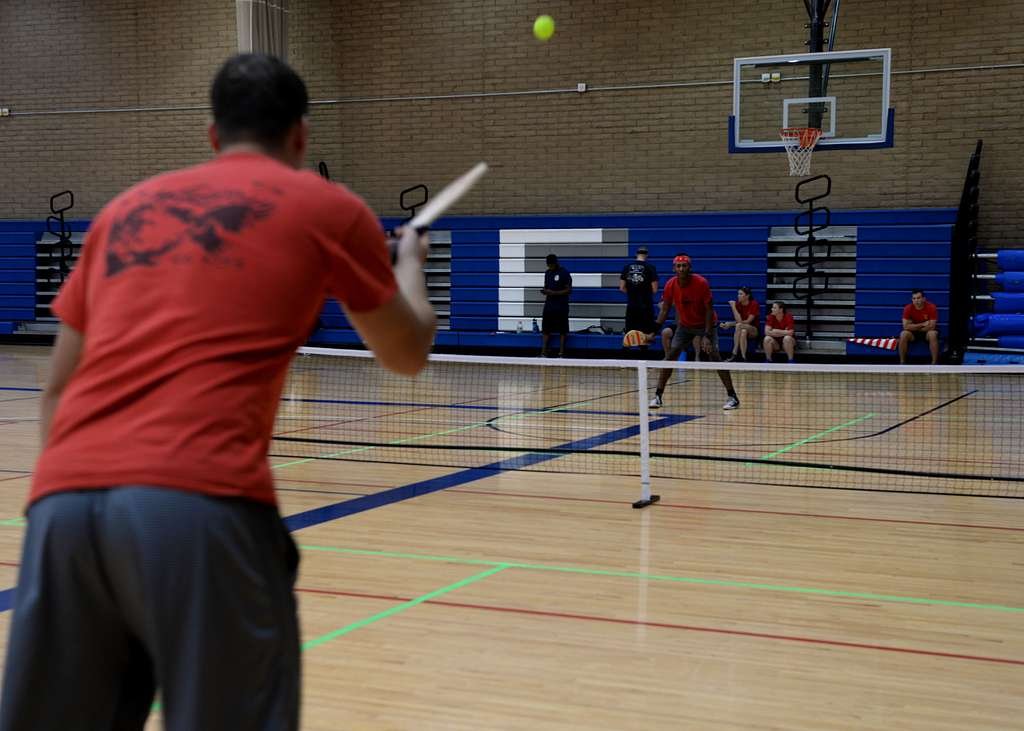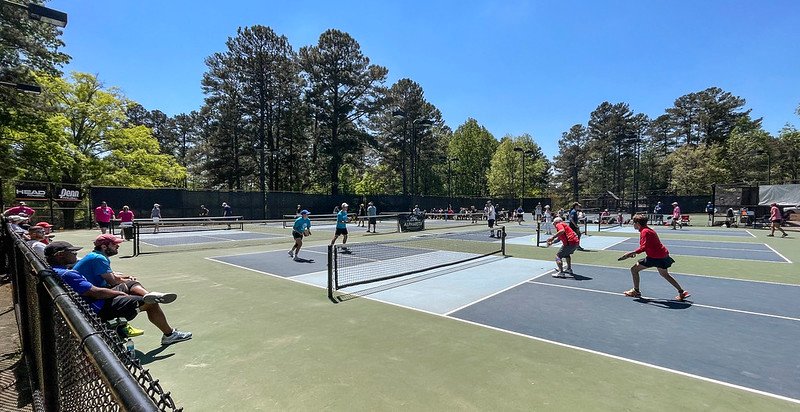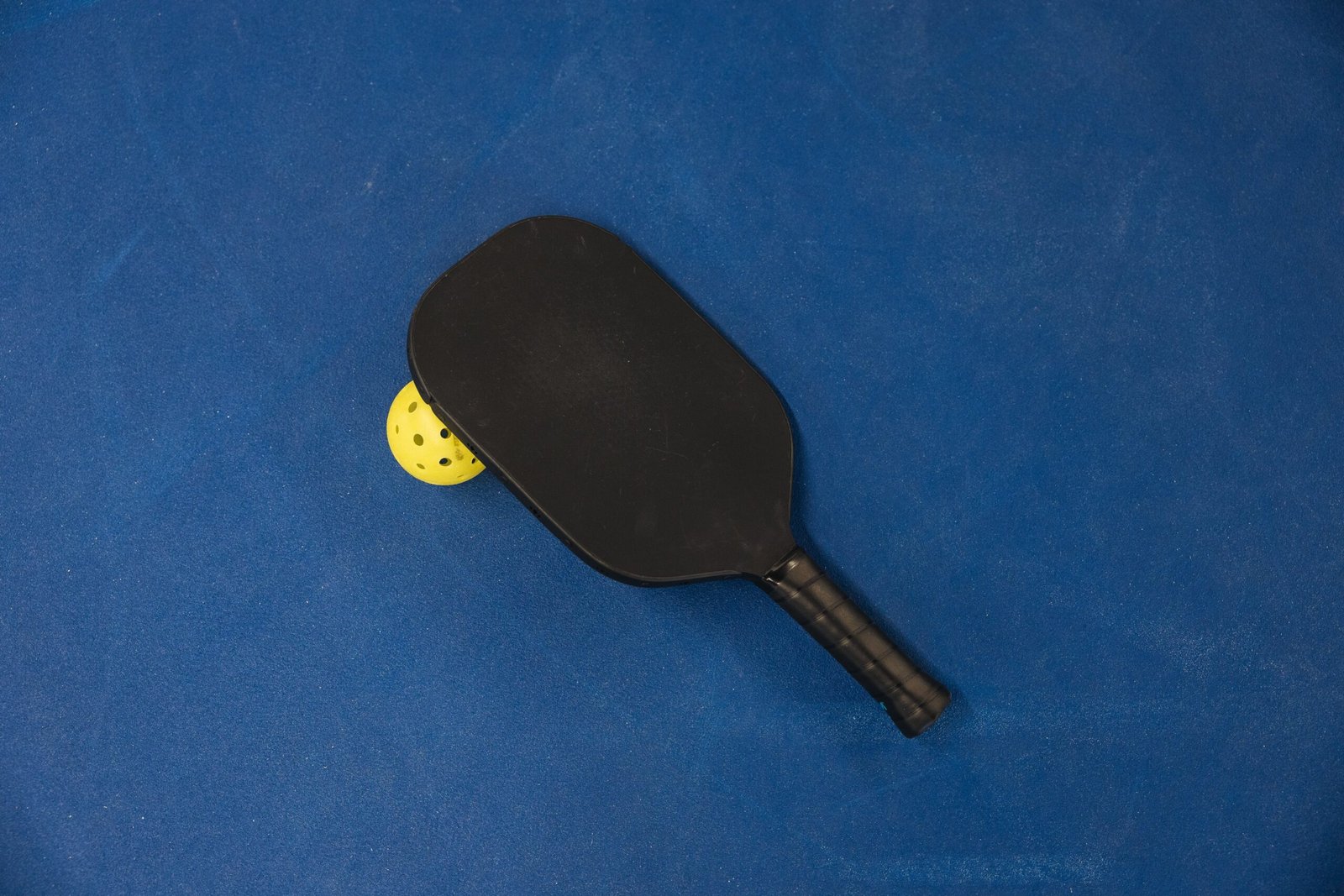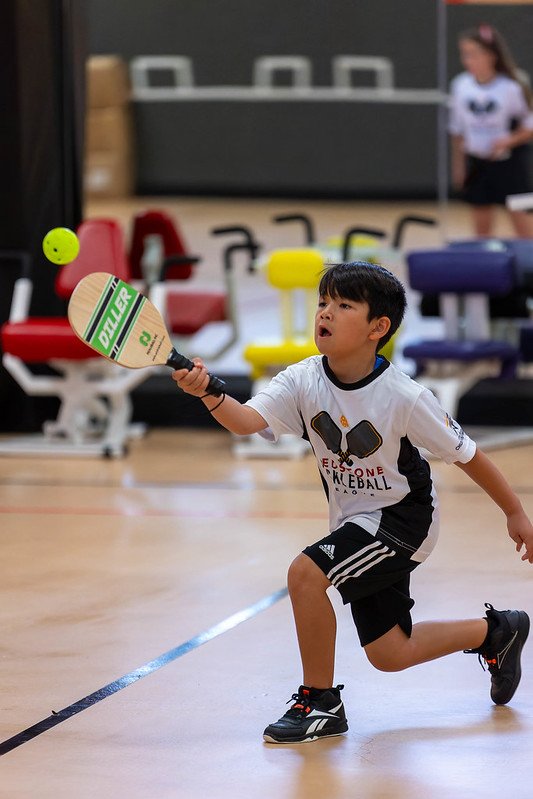Pickleball, a rapidly growing racquet sport, has garnered widespread popularity for its fusion of elements from tennis, badminton, and table tennis. Central to the game’s structure are the distinctive pickleball courts, divided into two halves by a net. Within these courts lie essential zones known as the “Ad Court” and the “Deuce Court,” each holding strategic significance within the gameplay, especially in doubles matches.
The Ad Court in pickleball refers to the left-hand side of the court for each player when facing the net. It holds a pivotal role in serving and scoring strategies. During the game, players engage in intense back-and-forth exchanges within these delineated zones, showcasing their skill and agility.
These pickleball courts are carefully designed, adhering to specific dimensions and markings, ensuring a fair and competitive playing field for enthusiasts. The precise delineation of the Ad Court, coupled with the game’s unique rules, demands strategic placement and calculated maneuvers from players to secure an advantage during serves and rallies.
Understanding the dynamics of the Ad Court is fundamental for players aiming to master the game. Serving from this court requires precision and strategic planning, as it often signifies a scoring advantage, particularly in doubles play, when serving at odd-numbered points. Additionally, players need to adapt their gameplay tactics to the nuances of the Ad Court, considering its significance in the overall strategy of a pickleball game.
In essence, the Ad Court represents more than just a portion of the pickleball court; it embodies a critical area where tactical decisions and skilled execution significantly influence the flow and outcome of the game. Mastery of this court’s dynamics elevates a player’s proficiency, underscoring the strategic importance of understanding the intricate details within the sport of pickleball.
Table of Contents
What is the deuce and ad?
In the context of racket sports like tennis and pickleball, “deuce” and “ad” refer to specific scoring situations. In tennis and pickleball, when the score reaches 40-all (or 40-40), it’s called a “deuce.” It signifies a tie, requiring one player or team to score two consecutive points to win the game.
From deuce, the following point won is referred to as the “ad” (short for advantage). The player or team that scores the first point after deuce gets the advantage. If they win the subsequent point, they secure the game. However, if the opposing side wins the point after the ad, the score returns to deuce. This cycle continues until a player or team secures two consecutive points following a deuce situation.
Understanding deuce and ad is crucial in both tennis and pickleball as it dictates the final moments of a game. It adds an element of tension and strategy as players or teams strive to gain the pivotal advantage point after a tie (deuce) and subsequently convert that advantage (ad) into a game-winning opportunity. Mastering the nuances of playing during the deuce. Capitalizing on the ad point can be decisive in clinching closely contested matches.

Where is Deuce Court?
In pickleball, the Deuce Court is located on the right-hand side of the court for each player when facing the net. This designated area is a crucial component of the pickleball court layout alongside its counterpart, the Ad Court. The court is divided into two halves by a net, and the Deuce Court specifically refers to the side where players stand to serve or receive serves during a game.
During gameplay, the Deuce Court is essential for serving strategies and scoring in doubles matches. Players serve diagonally from the Deuce Court to the opponent’s corresponding court, aiming to initiate a rally while adhering to the game’s rules and regulations.
Similar to the Ad Court, the Deuce Court has its strategic significance, mainly during doubles play. Serving from this court typically occurs at even-numbered points, adding complexity to the game’s scoring dynamics. Players must adapt their gameplay tactics and positioning when playing from the Deuce Court, considering its role in the overall strategy of the match.
Understanding the positioning and significance of the Deuce Court is fundamental for players seeking to excel in pickleball, as it directly influences serving techniques, gameplay tactics, and scoring strategies in this fast-paced and engaging racquet sport.
What are the ‘ad’ and ‘deuce’ courts?
Introduction to Pickleball Court
Pickleball, a thriving racquet sport, amalgamates key elements from tennis, badminton, and table tennis, offering a unique and engaging gameplay experience. The court itself serves as the central stage for this sport, divided into two halves by a net, mirroring the layout of a tennis court but on a smaller scale.
Within the confines of this court, players encounter specialized areas known as the ‘ad’ and ‘deuce’ courts. The ‘ad’ court is positioned on the left side for each player facing the net, while the ‘deuce’ court resides on the right. These distinct zones play a pivotal role in the strategic maneuvers and scoring dynamics of a pickleball match, particularly in doubles play.
Players engage in swift and calculated movements within these designated areas, aiming to outmaneuver opponents and capitalize on scoring opportunities. Serving from either the ‘ad’ or ‘deuce’ court requires precision and strategy, with the serving side being determined by the current score, alternating between odd and even numbers in doubles matches.
This division of the court into ‘ad’ and ‘deuce’ courts adds a layer of complexity and strategy to the game, demanding players to adapt their tactics based on the specific advantages and challenges presented by each court area. Understanding the nuances of these zones is vital for players aiming to excel and assert their prowess in the captivating sport of pickleball.
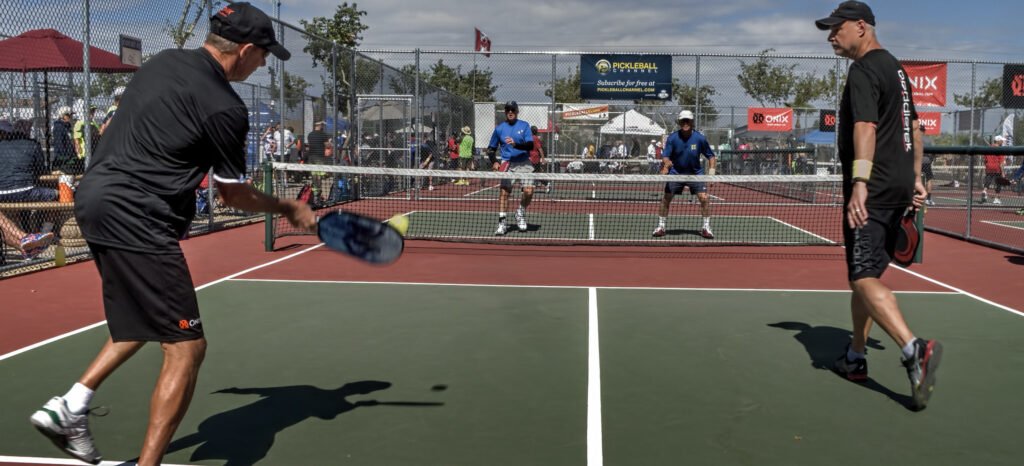
Ad Court
- Location
The ad court is the left-hand side of the pickleball court for each player when facing the net. In doubles play, this side of the court is significant during serving at odd-numbered points. Serving from the ad court demands precision and strategic planning, as it traditionally signifies a scoring advantage. Players strategically position themselves in this court to capitalize on its perceived advantage in scoring situations, making it a crucial area where tactical decisions greatly impact the flow and outcome of the game.
- Service Area
During the serve in pickleball, the serving team is required to initiate play from the right-hand side of their court. From this position, they execute a diagonal serve aimed toward the opponent’s ad court, which is the left-hand side of the opposing team’s court. This serves as the starting point of the rally, with the serving team strategically aiming to deliver an advantageous serve into the opponent’s court, setting the pace and dynamics for the ensuing gameplay.
- Scoring Significance
In doubles pickleball, when the serving team’s score stands at an odd number (1, 3, 5, etc.), the server serves from the right side of the court, known as the ad side. This convention stems from the tradition of considering the ad side as the advantageous serving position during odd-numbered scoring. By serving from this side, players aim to capitalize on the perceived strategic edge associated with the ad court, aligning their serves with the sport’s scoring dynamics to optimize their chances of maintaining control and securing points during the game.
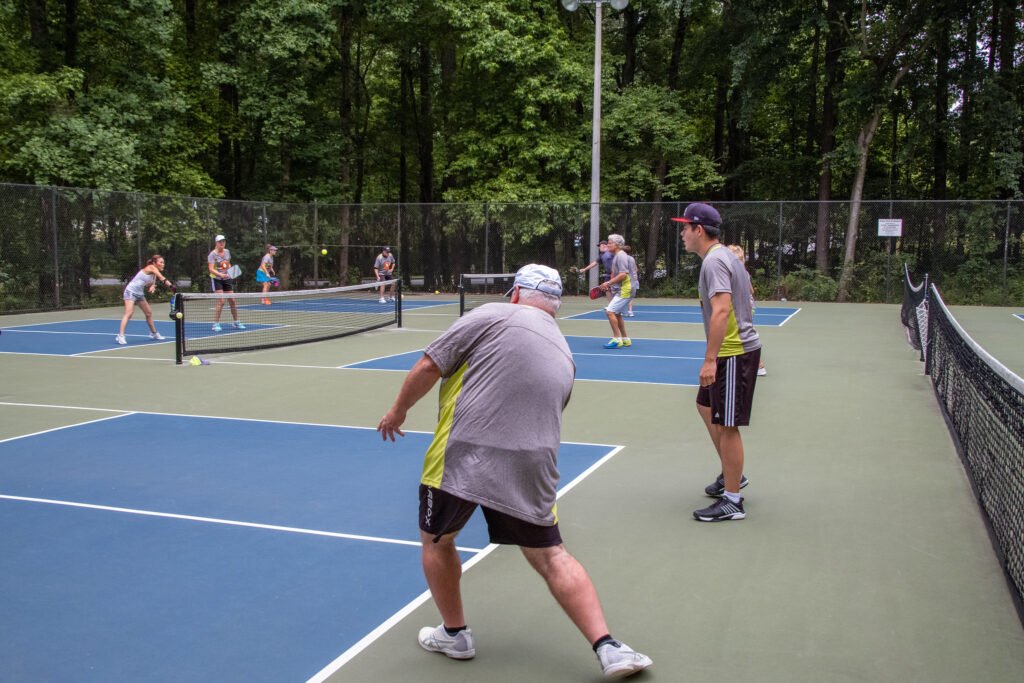
- Strategic Positioning
The Ad Court in pickleball holds a tactical advantage in specific score situations, prompting players to employ varied strategies during serving or returning serves. In doubles play, serving from the Ad Court during odd-numbered points grants a perceived advantage. Players strategically position themselves, aiming to capitalize on this advantageous side to secure points or maintain momentum. This nuanced approach involves serving placement, aggressive returns, and tactical maneuvers tailored to leverage the scoring dynamic, highlighting the significance of adapting strategies to exploit the tactical edge offered by the Ad Court in pickleball matches.
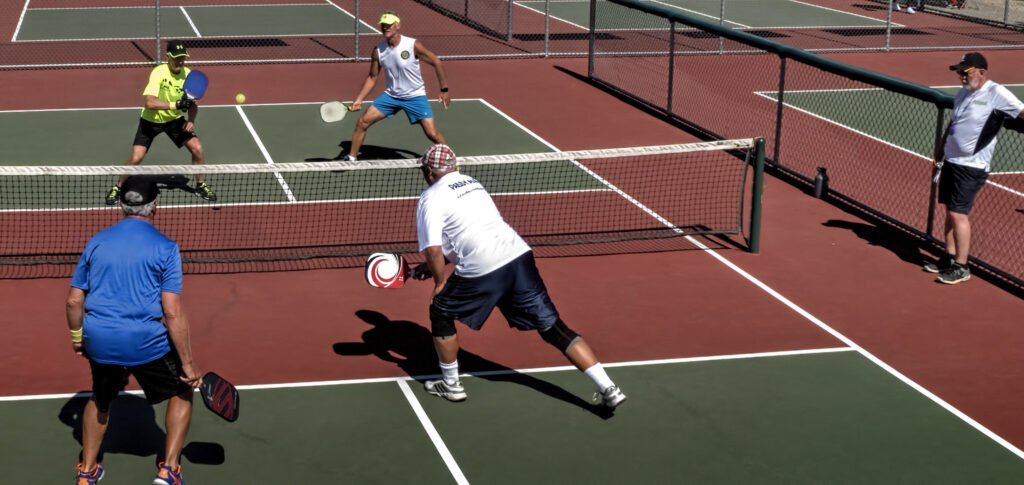
Deuce Court
- Location
In pickleball, the Deuce Court designates the right-hand side of the court for each player when facing the net. This specific area plays a pivotal role in serving and receiving serves during gameplay, especially in doubles matches. Serving from the Deuce Court involves hitting the ball diagonally to the opponent’s corresponding court. Its positioning and significance in the game affect strategic decisions and scoring dynamics, particularly during even-numbered points in doubles play. Understanding the nuances of the Deuce Court is essential for players aiming to optimize their tactics and gameplay in this dynamic racquet sport.
- Service Area
In pickleball, during the serve, the serving team is mandated to serve from the left-hand side of their court, executing a diagonal serve to the opponent’s deuce court. This specific serving procedure is a fundamental rule governing the game, ensuring that serves are directed diagonally across the court to initiate gameplay. Serving from this position allows for fair play and strategic maneuvering, aiming to start rallies and engage in the competitive exchange of shots between players on the opposite side of the court.
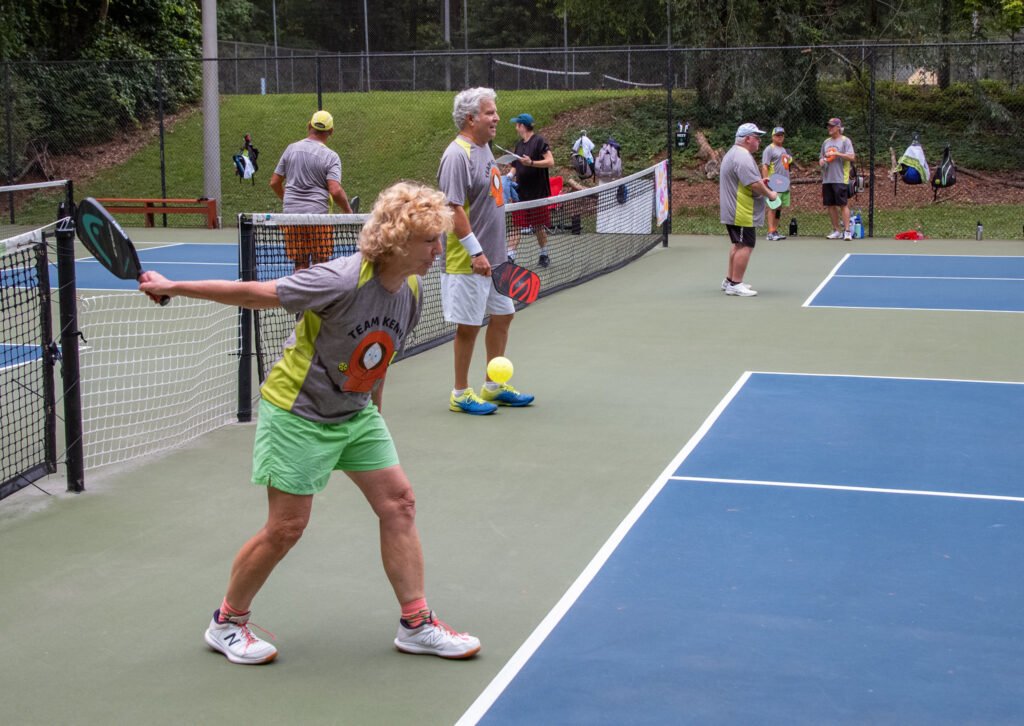
- Scoring Significance
In doubles play in pickleball when the serving team’s score reaches an even number such as 2, 4, 6, and so forth, the server must serve from the left side of the court, termed the deuce side. This tradition stems from the scoring system, where the server’s placement alternates between the Deuce Court and the Ad Court based on the score. The Deuce Court is often deemed slightly less advantageous due to this alternating nature of serving positions, prompting players to adapt their strategies to leverage its nuances during gameplay.
- Strategic Positioning
Players strategically alter tactics and positioning in the Deuce Court to offset its perceived disadvantage compared to the Ad Court in pickleball. This adaptation involves nuanced adjustments in serving and return techniques, aiming to nullify any perceived drawbacks. By employing varied strategies, players optimize their gameplay, leveraging the Deuce Court’s position to neutralize its perceived disadvantages. These tactical adjustments are pivotal in maintaining a competitive edge, ensuring adaptability in response to different game situations while maximizing opportunities for effective serves and returns within the confines of the Deuce Court.
In pickleball, comprehending the nuances of the ad and deuce courts holds paramount importance, particularly in doubles matches, where tactical decisions significantly shape gameplay outcomes. These distinct court divisions dictate serving strategies and player positions, directly influencing the flow of the game. Players must astutely navigate these designated areas to capitalize on scoring advantages at pivotal moments.
The ad court, positioned on the left side when facing the net, often carries an advantage during odd-numbered scoring situations in doubles play. Conversely, the deuce court, located on the right side, assumes significance during even-numbered scoring scenarios. This strategic asymmetry demands players to adapt their tactics based on the current score, serving from specific sides to optimize their team’s performance.
Mastery of both court sides not only amplifies a player’s adaptability but also augments their overall gameplay finesse. Versatility in maneuvering between the ad and deuce courts empowers players to exploit opportunities and counter opponents’ strategies effectively. This proficiency in court management enables players to make calculated decisions, leveraging their skills to gain an edge and secure victories in the dynamic realm of pickleball.
